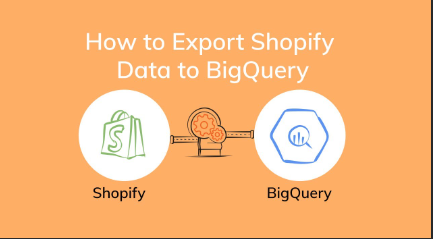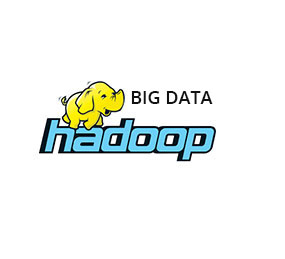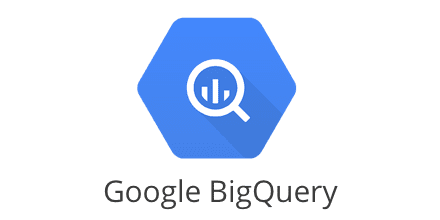Mixpanel To Bigquery
In the bustling arena of digital analytics, a chasm often exists between raw data and actionable insights. The gap is wide, the stakes are high, and the need for robust analytics is more critical than ever.
Businesses are swimming in data, yet without the right tools, it’s akin to having a treasure map with no compass. This is where the integration of Mixpanel with BigQuery emerges as a game changer, turning the cacophony of data into a harmonious symphony.
The Growing Need for Robust Analytics
Data is the new oil, they say. But like crude oil, it must be refined to unlock its true potential. Robust analytics offer the lens through which raw data can be transformed into strategic gold.
With consumer behaviors evolving at breakneck speed, companies need real-time, precise insights to stay ahead. This is not just about staying competitive; it’s about survival in a data-driven world.
Why Integrating Mixpanel with BigQuery is a Game Changer
Imagine having a virtuoso and a grand orchestra at your disposal. Mixpanel is your data virtuoso, capturing intricate user behaviors and interactions with finesse. BigQuery, on the other hand, is the grand orchestra, capable of processing vast datasets with lightning speed. When these two powerhouses combine, they create an unparalleled data symphony, enabling businesses to conduct their strategies precisely and gracefully.
Understanding Mixpanel: The Data Maestro
What is Mixpanel?
Mixpanel is a sophisticated analytics platform designed to delve deep into user behavior. It goes beyond page views, providing granular insights into how users interact with your product. From tracking specific events to understanding user journeys, Mixpanel is the maestro orchestrating a nuanced performance of data collection and analysis.
Key Features and Benefits of Mixpanel
Mixpanel’s standout features include event tracking, funnel analysis, cohort analysis, and A/B testing. These tools empower businesses to dissect user behavior, identify patterns, and refine their strategies. The benefits are manifold: improved user engagement, higher retention rates, and data-driven decision-making that propels business growth.
How Mixpanel Captures User Data
Mixpanel captures user data through event tracking, recording specific actions users take within an application. This can range from button clicks to form submissions, creating a detailed tapestry of user interactions. The platform also supports custom properties, allowing businesses to tailor the data collection to their unique needs, ensuring every relevant detail is captured and analyzed.
BigQuery: The Data Powerhouse
Introduction to Google BigQuery
BigQuery is Google’s fully managed, serverless data warehouse designed for swift and scalable analysis of large datasets. Its strength lies in its ability to handle enormous volumes of data with ease, performing complex queries in a fraction of the time traditional databases require. BigQuery is not just a repository; it’s a powerful engine driving deep data exploration.
Advantages of Using BigQuery for Data Analysis
BigQuery’s advantages are extensive. It offers real-time analytics, high-speed querying, and robust scalability. With its pay-as-you-go model, businesses only pay for the queries they run, making it a cost-effective solution for large-scale data analysis. Moreover, its integration with other Google Cloud services ensures seamless workflow and enhanced data processing capabilities.
BigQuery’s Role in Modern Data Warehousing
In the modern data ecosystem, BigQuery stands as a linchpin. Its ability to process and analyze massive datasets in real time supports the dynamic needs of contemporary businesses. By facilitating the integration of disparate data sources, BigQuery ensures that businesses have a comprehensive, unified view of their data, enabling more informed and strategic decision-making.
Preparing for the Integration: Setting the Stage
Pre-Integration Checklist: What You Need
Before embarking on the integration journey, it’s crucial to have a clear roadmap. This includes verifying that both Mixpanel and BigQuery accounts are active and properly configured, ensuring you have the necessary API keys and permissions, and establishing a clear understanding of your data schema. A well-prepared checklist acts as the foundation for a smooth and successful integration.
Setting Up Your Mixpanel Account for Data Export
To begin, ensure your Mixpanel account is primed for data export. This involves configuring data streams and ensuring event tracking is set up correctly. Additionally, review your data properties and ensure they align with your analytical goals. Proper setup at this stage ensures that the data flowing into BigQuery is accurate and relevant.
Configuring BigQuery for Data Import
Next, prepare BigQuery to receive data from Mixpanel. This involves setting up datasets and tables within BigQuery, configuring data schemas to match the exported Mixpanel data, and ensuring that your BigQuery instance is optimized for incoming data. Proper configuration minimizes data transformation issues and facilitates a seamless data import process.
Step-by-Step Guide: Harmonizing Mixpanel and BigQuery
Authenticating and Connecting Accounts
Start by authenticating your Mixpanel and BigQuery accounts. This typically involves generating API keys from Mixpanel and configuring them within your BigQuery instance. Secure authentication ensures a secure data transfer and lays the groundwork for a continuous data pipeline.
Exporting Data from Mixpanel
With authentication in place, initiate the data export from Mixpanel. This process can be automated using Mixpanel’s export API, allowing you to specify the data range and events to be exported. Regularly scheduled exports ensure that your BigQuery dataset remains up-to-date with the latest user interactions.
Importing Data into BigQuery
Once the data is exported, the next step is importing it into BigQuery. This involves creating a data load job within BigQuery, specifying the source data and target tables. Utilize BigQuery’s data transformation capabilities to align the imported data with your analytical needs, ensuring a coherent and usable dataset.
Automating the Integration for Real-Time Updates
To maintain real-time insights, automate the data integration process. Utilize tools like Google Cloud Functions or third-party ETL services to establish a continuous data pipeline. Automation ensures that your BigQuery dataset is always current, providing timely and actionable insights.
Best Practices for a Flawless Integration
Ensuring Data Accuracy and Consistency
Data accuracy and consistency are paramount. Regularly audit your data pipeline to identify and rectify discrepancies. Implement validation checks during data export and import to ensure that the data flowing into BigQuery is accurate and consistent with the source data from Mixpanel.
Managing Data Privacy and Security
Safeguarding data privacy and security is critical. Ensure that all data transfers are encrypted and comply with relevant data protection regulations. Implement access controls within BigQuery to restrict data access to authorized personnel only, protecting sensitive information from unauthorized access.
Optimizing Performance and Query Efficiency
Optimizing performance and query efficiency is essential for timely data analysis. Utilize BigQuery’s built-in optimization features, such as partitioned tables and clustering, to enhance query performance. Regularly review and refine your queries to ensure they run efficiently, minimizing computational costs and maximizing analytical speed.
Unleashing the Power of Your Data: Advanced Analysis
Crafting Complex Queries in BigQuery
With the integration in place, leverage BigQuery’s powerful querying capabilities to perform advanced analyses. Craft complex SQL queries to explore user behaviors, identify trends, and uncover hidden insights. BigQuery’s extensive SQL support allows for sophisticated data manipulations, empowering you to derive meaningful conclusions from your Mixpanel data.
Visualizing Mixpanel Data with Google Data Studio
Visualization is key to understanding data. Use Google Data Studio to create intuitive and interactive dashboards, visualizing Mixpanel data in ways that highlight critical insights. Customizable charts and graphs make it easy to interpret complex data, transforming raw numbers into compelling visual stories.
Creating Custom Dashboards for Actionable Insights
Custom dashboards tailored to your business needs provide actionable insights at a glance. Combine Mixpanel and BigQuery data to create comprehensive dashboards that track key performance indicators, user engagement metrics, and other vital statistics. These dashboards become invaluable tools for informed decision-making and strategic planning.
Overcoming Common Challenges
Troubleshooting Connection Issues
Despite meticulous planning, connection issues can arise. Common problems include API authentication failures, data format mismatches, and network connectivity issues. Regularly monitor your data pipeline, use logging to identify issues promptly, and consult documentation to troubleshoot and resolve any connection problems.
Handling Large Data Sets and Performance Bottlenecks
Dealing with large datasets can be challenging. Performance bottlenecks may occur if queries are not optimized or if data is not properly partitioned. Utilize BigQuery’s advanced features, such as table partitioning and materialized views, to manage large datasets effectively and maintain optimal performance.
Staying Compliant with Data Regulations
Compliance with data regulations is non-negotiable. Ensure your data integration process adheres to regulations such as GDPR, CCPA, and other relevant data protection laws. Regularly review your data handling practices and update them as necessary to remain compliant with evolving regulations.
Case Studies: Success Stories from the Field
How Leading Companies Leverage Mixpanel and BigQuery
Many leading companies have successfully integrated Mixpanel with BigQuery to enhance their data analytics capabilities. For instance, e-commerce giants use this integration to track user behavior across multiple touchpoints, optimizing their marketing strategies and improving customer experiences. By leveraging the strengths of both platforms, these companies gain a competitive edge in their respective markets.
Real-World Examples of Enhanced Decision-Making
Real-world examples abound of businesses making better decisions through this powerful integration. A major media company, for example, used Mixpanel and BigQuery to analyze content engagement, resulting in a 20% increase in user retention.
These success stories highlight the transformative impact of integrating Mixpanel with BigQuery, showcasing the tangible benefits of a well-orchestrated data strategy.
Conclusion: Orchestrating Your Data Future
Recap of Key Points
Integrating Mixpanel with BigQuery bridges the data gap, creating a seamless flow of information that enhances analytical capabilities. From understanding the intricacies of both platforms to executing
a flawless integration, this process transforms raw data into actionable insights.
The Future of Data Integration
The future of data integration lies in continuous innovation and adaptation. As data sources and analytical needs evolve, so too will the tools and techniques for integrating and analyzing data. Staying abreast of these developments ensures that businesses can continue to harness the full potential of their data.
Final Thoughts and Next Steps
Embarking on the journey of integrating Mixpanel with BigQuery is a strategic move towards unlocking deeper insights and driving business growth. By following best practices and staying vigilant against potential challenges, businesses can orchestrate a data future that is both innovative and impactful. The symphony of data awaits—are you ready to conduct it?




